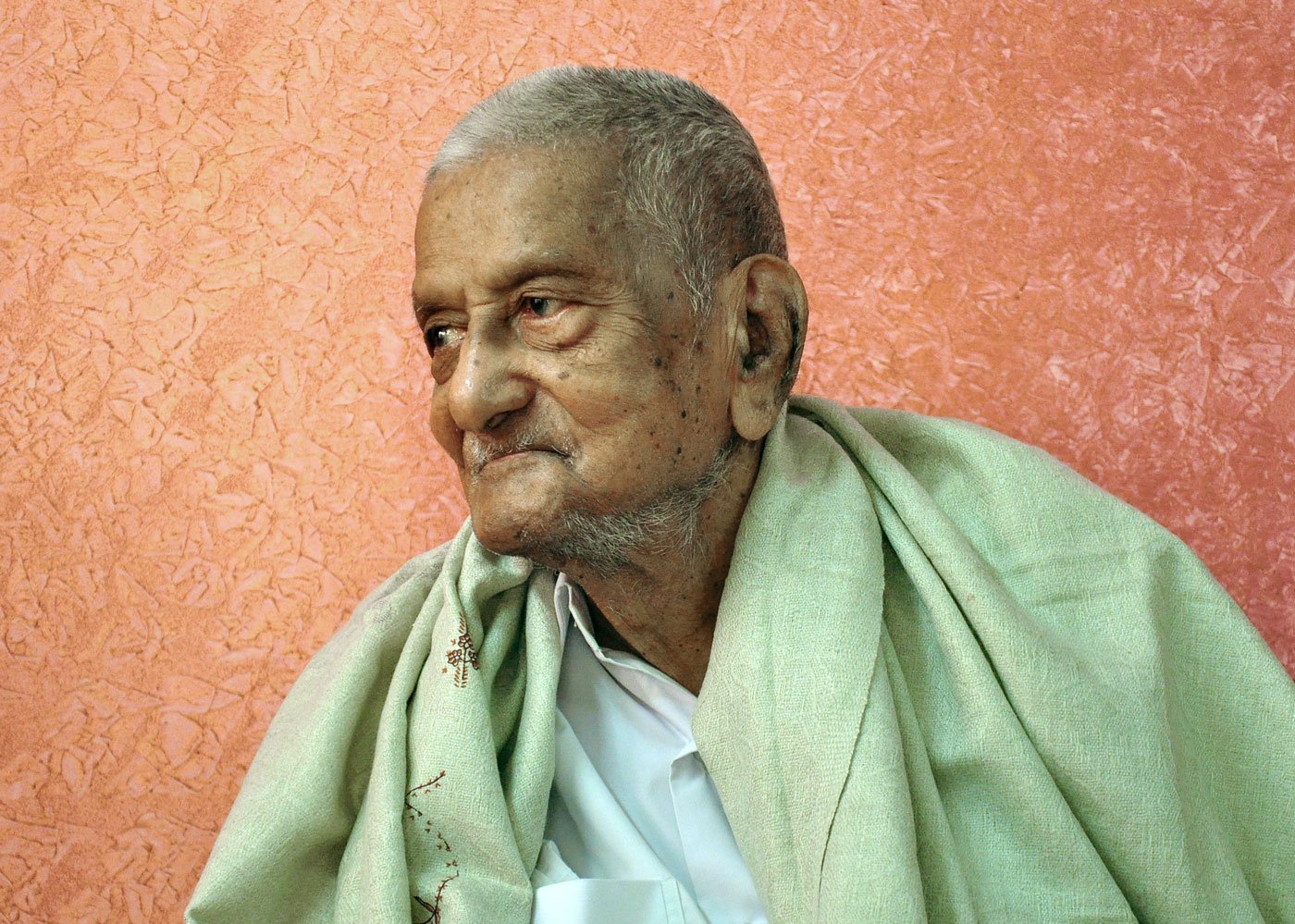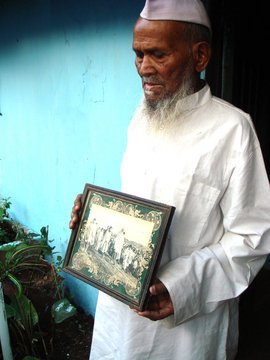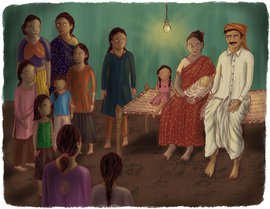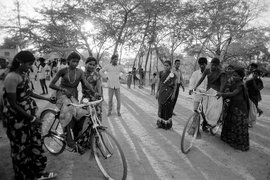When the crowds rushed out on to the streets of Thoothukudi town – as they did across many parts of Tamil Nadu – a very young boy ran out to join them. In moments he was part of the protest, shouting radical slogans. “You may not know or realise that today,” he tells us, “but the execution of Bhagat Singh was an emotional turning point for the freedom struggle in Tamil Nadu. People were appalled and so many were in tears.
“I was just 9 years old,” he chuckles.
Today, he is 99 years old (July 15, 2020), but retains the fire and spirit that made him a freedom fighter, an underground revolutionary, writer, orator and radical intellectual. A man who stepped out of a British jail on August 14, 1947. “On that day, the judge came to the central prison and released us. We had been acquitted in the Madurai conspiracy case. I just came out of Madurai central prison and joined the freedom procession rally.”
Batting on 100, N. Sankariah remains intellectually active, still delivers lectures and talks and, as late as 2018, travelled from his home in Chrompet, a Chennai suburb – where we’re interviewing him – to address the Tamil Nadu Progressive Writers and Artists meet in Madurai. The man who never completed his graduation because of his involvement in India’s struggle for freedom went on to author several political tracts, booklets, pamphlets and journalistic articles.
Narasimhalu Sankariah came close to getting that BA in History though, at The American College, Madurai, missing out on his final exams in 1941 by just two weeks. “I was joint secretary of the college students’ union.” And a bright pupil who founded a poetry society on campus while also representing the college in football. He was very active in the anti-British Raj movements of the time. “During my college days, I befriended many people with left-inclined ideologies. I understood that social reform would not be complete without Indian Independence.” By age 17, he was a member of the Communist Party of India (then banned and underground).
He remembers the attitude of the American College as being positive. “The director and a few of the faculty were Americans, the rest Tamilians. They were supposed to be neutral, but they were not pro-British. Student activities were allowed there….” In 1941, a meeting was held in Madurai to condemn the arrest of an Annamalai University student, Meenakshi, for taking part in anti-British protests. “And we issued a pamphlet. Our hostel rooms were raided, and Narayanaswami (my friend) was arrested for having a pamphlet. Later we held a protest meeting to condemn his arrest…
“After that, the British arrested me, on February 28, 1941. It was 15 days before my final exams. I never came back, never completed my BA.” Describing the moment of his arrest he would say, decades later, “I was proud to go to jail for India’s freedom, to be part of the Independence struggle. This was the only thought in my head.” Nothing about a destroyed career. That was in line with one of his favourite slogans of radical youth of that time: “We are not job hunters; we are freedom hunters.”
“After spending 15 days in Madurai Jail, I was sent to Vellore prison. At that time, many people from Tamil Nadu, Andhra Pradesh, Kerala were also detained there.
“Comrade A. K. Gopalan [legendary communist party leader from Kerala] was arrested in Trichy for organising an event. Comrades Imbichi Bava from Kerala, V. Subbiah, Jeevanandham, were also arrested during the event. They were all there in Vellore prison. The Madras government intended to divide us into two groups, one of which would get 'C' type ration, which they gave only to the criminal convicts. We staged a 19-day hunger strike against this system. By day 10, they divided us into two groups. I was just a student then.”
It was a very surprised Inspector General of Prisons who dropped in on Sankariah’s cell to find the teenager reading Maxim Gorky’s Mother . “‘On the tenth day that you are on hunger strike, you are reading literature – Gorky’s Mother ?’ he asked,” says Sankariah, eyes gleaming with fun at the recollection.
Other famous personalities held at the time there, in a separate jail, included “Kamarajar [K. Kamaraj, later chief minister of Madras State – now Tamil Nadu – from 1954-63], Pattabhi Sitaramayya [Congress president soon after Independence], and many others. However, they were in another yard, another jail. The congressmen did not participate in the hunger strike. Their line was: ‘We are bound by Mahatma Gandhi's advice’. Which was: ‘don't have any stir in jail’. However, the government made some concessions. We stopped our hunger strike on day 19.”
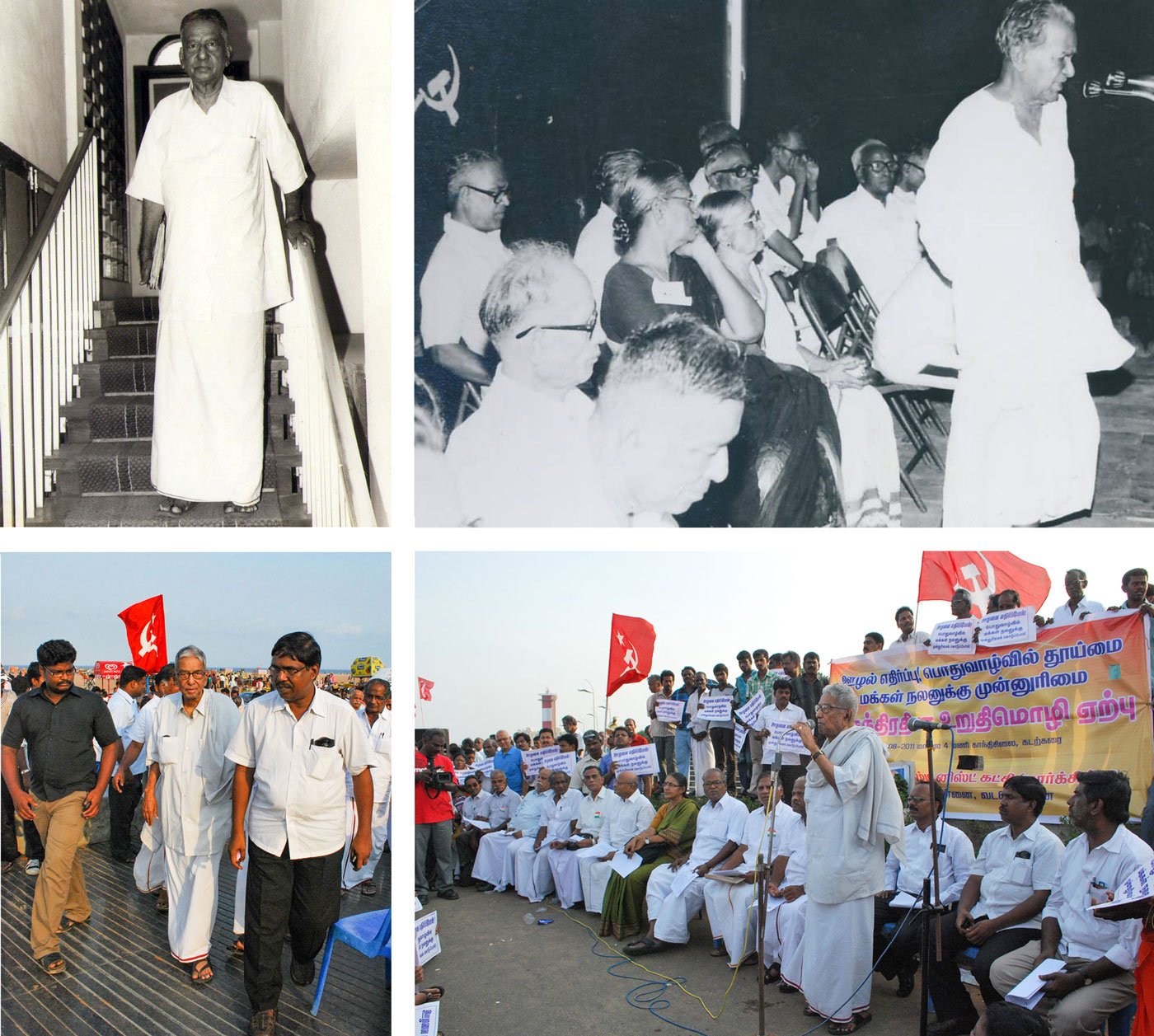
Top left: Sankariah at his party’s state committee office in the mid-90s. Top right: At a public meeting (first person, front corner) addressed by his old comrade P. Ramamurti in the 1980s, Bottom row: Addressing an anti-corruption meeting in Chennai in 2011
Despite their strong differences on issues, says Sankariah, “Kamarajar was a very good friend of the communists. His companions sharing a room in the jail – from Madurai and Tirunelveli – were also communists. I used to be very close to Kamarajar. He intervened more than once to try and end our ill-treatment. But of course, there were huge arguments in the jail [between congressmen and communists], especially when the German-Soviet war broke out.
“A while later, eight of us were transferred to the jail in Rajahmundry [now in Andhra Pradesh] and placed in a separate yard there."
“By April 1942, the government released all the students – except me. The head warden came and asked: ‘Who is Sankariah?’ and then informed us that everybody was released – other than me. For a month, I was in solitary confinement and had the entire yard to myself!”
What were he and the others charged with? “No formal charges, only detention. Every six months they would send you a written notice, stating the reasons why you were grounded. The reasons would be: sedition, communist party activities, etc. We would submit a response to it to a committee – and the committee would reject it.”
Oddly enough, “my friends who were released from Rajahmundry jail met Kamarajar at Rajahmundry station – he was returning from Calcutta [Kolkata]. When he learned I wasn’t released, he wrote a letter to the chief secretary of Madras stating that I should be transferred back to Vellore jail. He wrote me a letter also. I was transferred a month later to Vellore jail – where I was with 200 other colleagues.”
On one of his many trips to several prisons, Sankariah would also meet R. Venkataraman, the future president of India. “He was with the Communist Party of India in jail, a member in 1943. Later, of course, he went on to join the Congress party. Nonetheless, we did work together for several years.”

The school in Thoothukudi town (left) that Sankariah attended upto Class 5. He later completed schooling at St. Mary’s (middle) in Madurai. And then on to The American College (right), Madurai for a BA that he never completed. He was jailed 15 days before his final exams
Many of Sankariah’s contemporaries in the American College – and in the larger students’ movement – would become prominent figures after graduation. One went on to become the chief secretary of Tamil Nadu, another a judge, a third an IAS officer who was secretary to a chief minister decades ago. Sankariah went on to frequent more jails and prisons – even after Independence. Among the jails he saw from the inside before 1947 – Madurai, Vellore, Rajahmundry, Kannur, Salem, Thanjavur….
With the Communist Party banned in 1948, he went underground once more. He was arrested in 1950 and released a year later. In 1962, he was among many communists jailed – in his case, for 7 months – at the time of the India-China war. In yet another crackdown on the communist movement in 1965, he spent a further 17 months in jail.
There’s a remarkable lack of bitterness towards those who targeted him after Independence. As far he is concerned, those were political battles, not personal ones. And his was and remains a fight for the wretched of the earth, with no thought of personal gain.
What were for him the turning points, or inspirational moments of the freedom struggle?
“Bhagat Singh’s execution [March 23, 1931] by the British, of course. The Indian National Army [INA] trials starting 1945, and the Royal Indian Navy [RIN] Mutiny of 1946.” These were “among the main events that gave the battle against British imperialism greater momentum.”
Through the decades, his involvement in and commitment to the Left grew deeper. He would be forever, a wholetimer of his party.
“In 1944 I was released from Thanjavur jail and was selected as the Madurai district committee secretary of the Communist Party of India. And for 22 years, I was elected as the state committee secretary of the Party.”
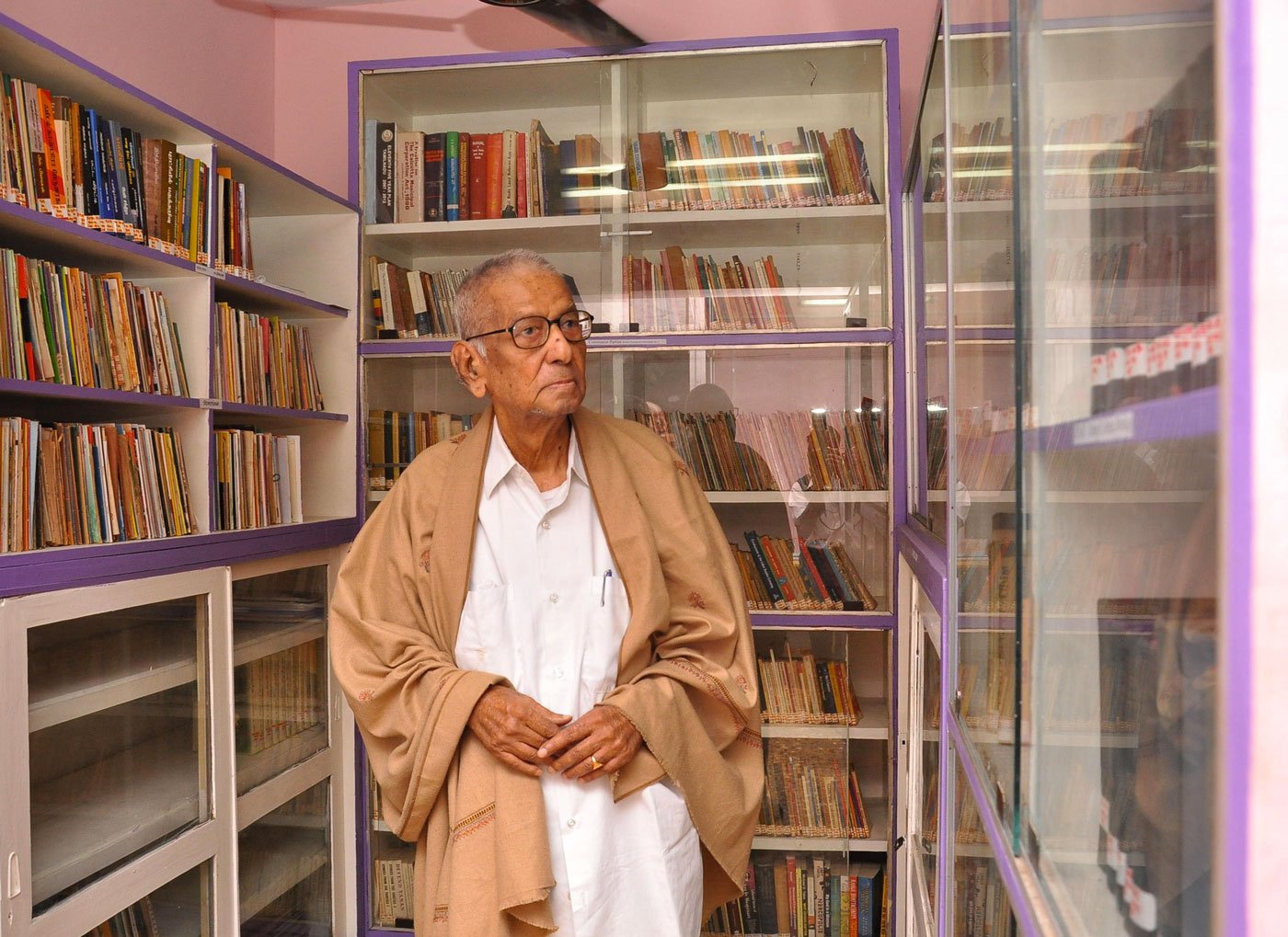
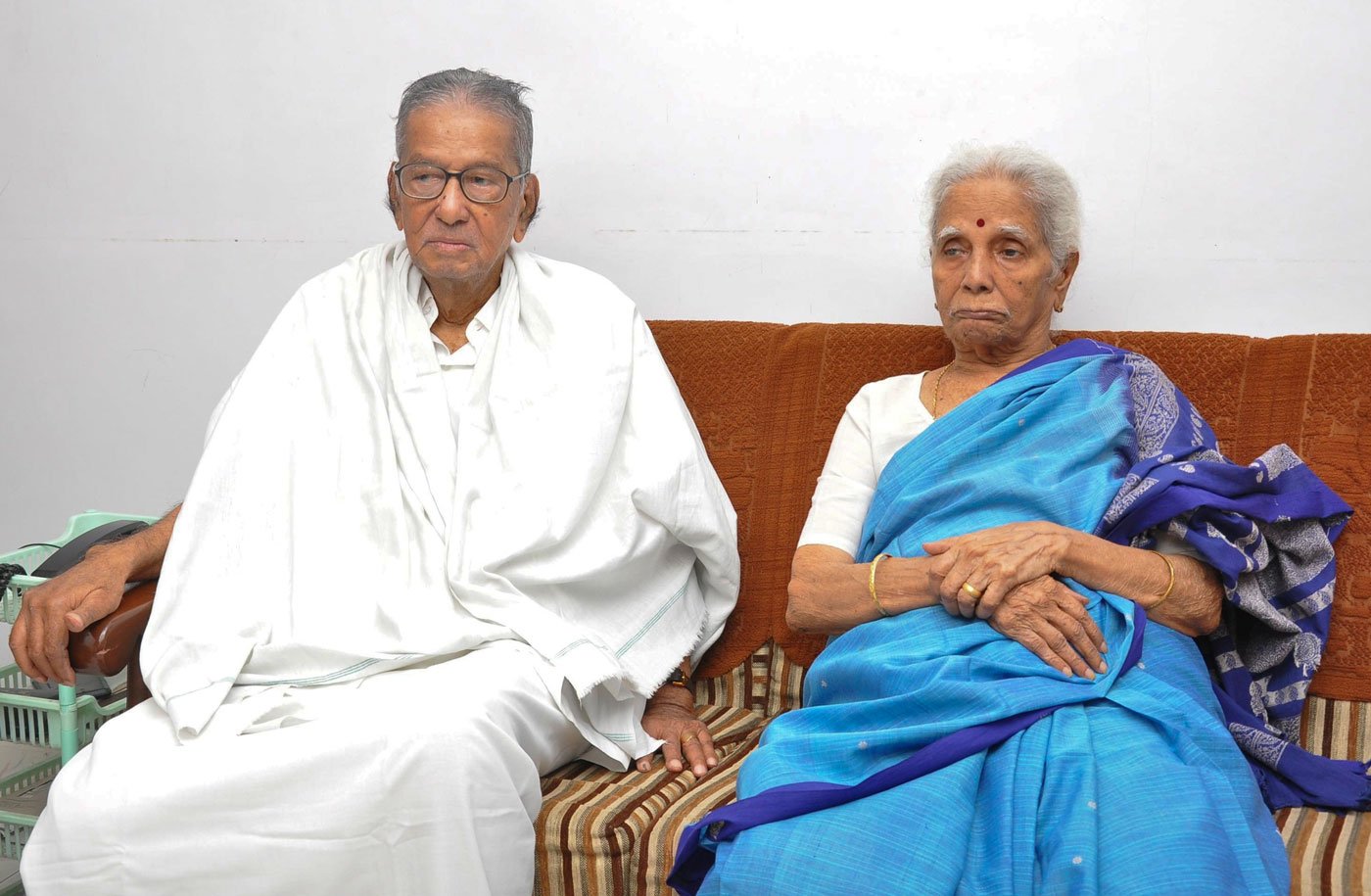
Left: Sankariah in his party office library in 2013 – he had just inaugurated it. Right: With his wife S. Navamani Ammal in 2014 on his 93rd birthday. Navamani Ammal passed away in 2016
Sankariah was a key figure in mass mobilisation. Madurai was, by the mid-1940s, a major base for the Left. “When P.C. Joshi [CPI general secretary] came to Madurai in 1946, the meeting was attended by 1 lakh people. Many of our meetings were drawing huge crowds.”
Their growing popularity led the British to foist what came to be known as the ‘Madurai conspiracy case’ against P. Ramamurti [renowned communist party leader in Tamil Nadu] as first accused, Sankariah as second accused, and several other CPI leaders and activists. They were charged conspiring at their office to murder other trade union leaders. The chief witness was a cart-puller who, police said, just happened to overhear them and dutifully reported it to the authorities.
As N. Rama Krishnan (Sankariah’s younger brother) puts it in his 2008 biography P. Ramamurti – A Centenary Tribute : “During the enquiry, Ramamurti [who argued the case for himself] proved that the main witness was a cheat and a petty thief who had undergone jail sentences in various cases.” The special judge who heard the case “came to the jail premises on August 14, 1947…released all those involved in the case and severely criticised the government for launching this case against respected leaders of the workers.”
There have been strange echoes of that past in recent years – though it’s unlikely in our time we’ll find a special judge going down to the prison to free the innocent and flay the government.
After the CPI was banned in 1948, Ramamurti and others were again jailed – this time in Independent India. Elections were coming up, and the popularity of the Leftists was a threat to the ruling Congress party in Madras state.
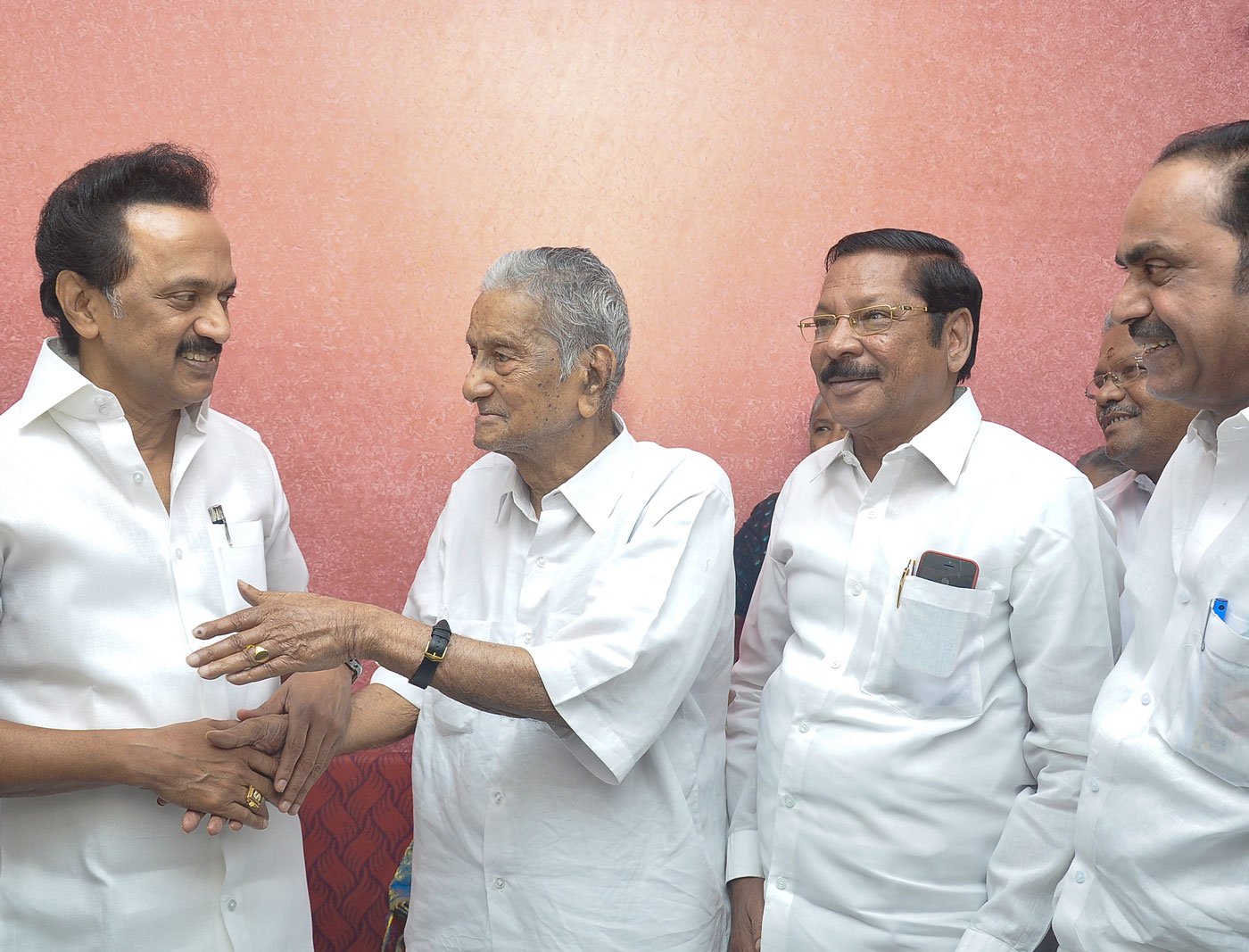
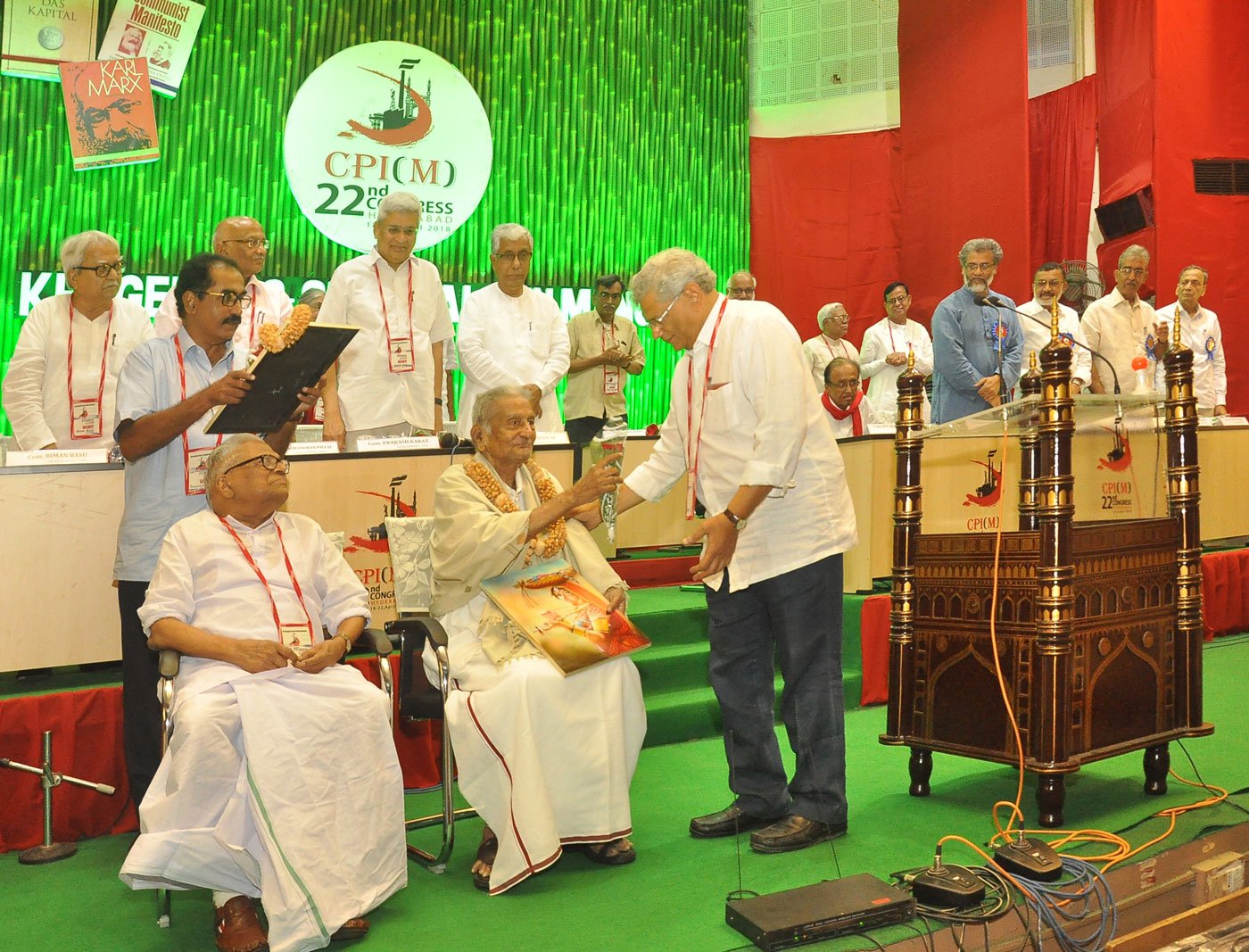
Left: DMK leader M.K. Stalin greeting Sankariah on his 98th birthday in 2019. Right: Sankariah and V.S. Achuthanandan, the last living members of the 32 who walked out of the CPI National Council meeting in 1964, being felicitated at that party’s 22nd congress in 2018 by party General Secretary Sitaram Yechury
“So Ramamurti filed his nomination while in detention, before the superintendent of the central jail. He contested the 1952 election to the Madras Assembly from Madurai North constituency. I was in charge of his campaign. The other two candidates were Chidambaram Bharati, a veteran congressman, and P.T. Rajan from the Justice Party. Ramamurti won handsomely, the result was announced while he was still in jail. Bharati came second and Rajan lost his deposit. The victory meeting drew over 3 lakh people to celebrate the win.” Ramamurti emerged the first leader of the opposition in the Tamil Nadu Assembly after Independence.
When the communist party split in 1964, Sankariah went with the newly formed CPI-M. “From the 32 members who walked out of the CPI National Council in 1964, myself and V. S. Achuthanandan are the only two members still alive today.” Sankariah went on to become general secretary and later president of the All India Kisan Sabha, still the largest farmers organisation in India with 15 million members. He also served as the CPI-M Tamil Nadu state secretary for seven years and on the party’s central committee for over two decades.
He is proud of the fact that “We were the first to introduce Tamil in the Tamil Nadu assembly. In 1952, there was no provision to speak in Tamil in the assembly, English was the only language, but [our MLAs] Jeevanandam and Ramamurthy spoke in Tamil though the provision for it came only 6 or 7 years later.”
Sankariah’s commitment to the working class and peasantry remains undiminished. He believes the communists will “find the correct answers to electoral politics” and build mass movements on a greater scale. An hour and a half into the interview, the 99-year-old is still talking with the same passion and energy with which he began. His spirit remains that of the 9-year-old who took to the streets inspired by the sacrifice of Bhagat Singh.
Note: My thanks to Kavitha Muralidharan for her invaluable inputs in the making of this story.
